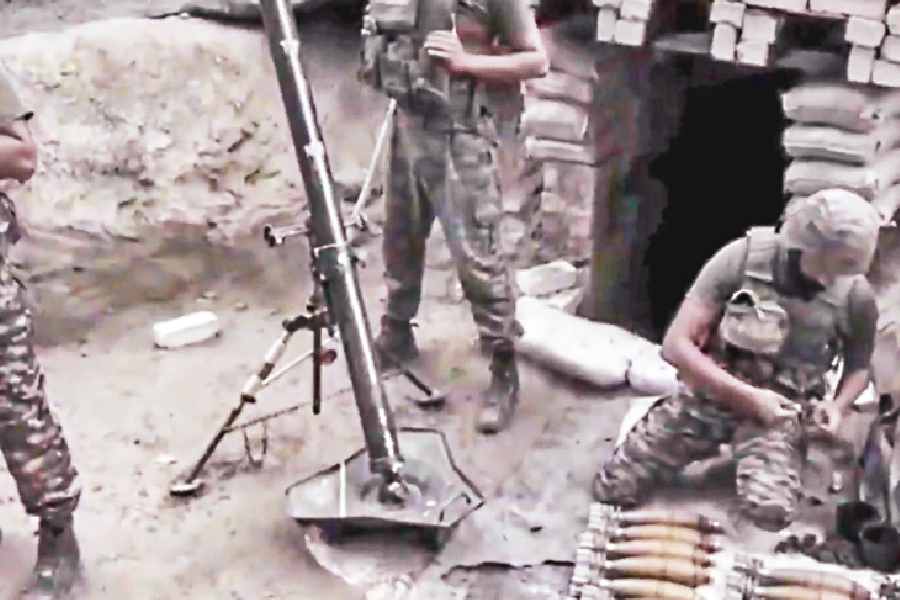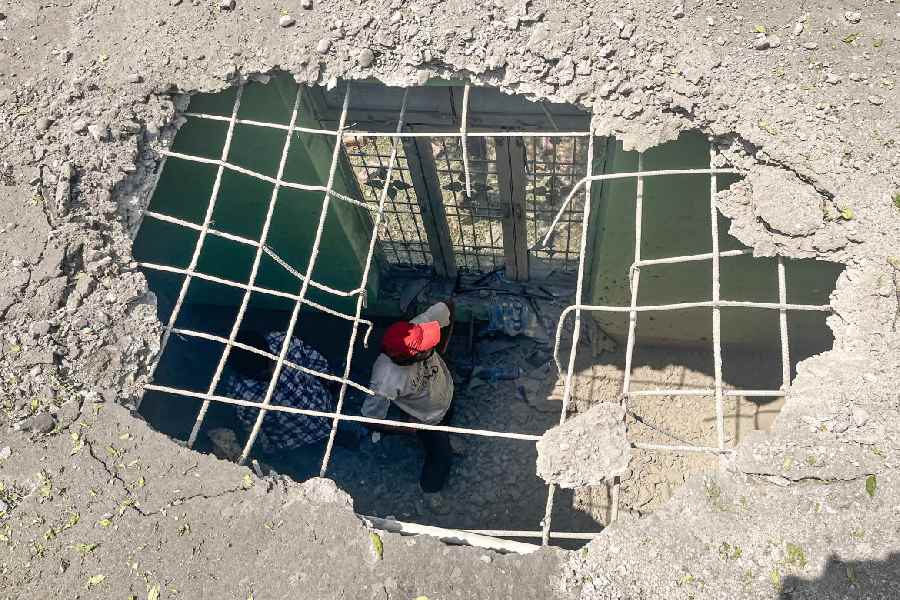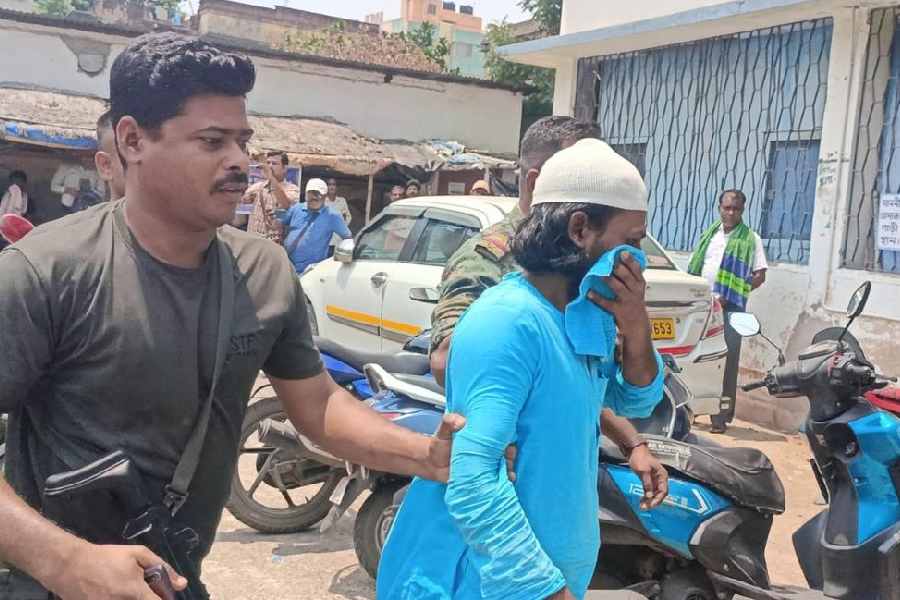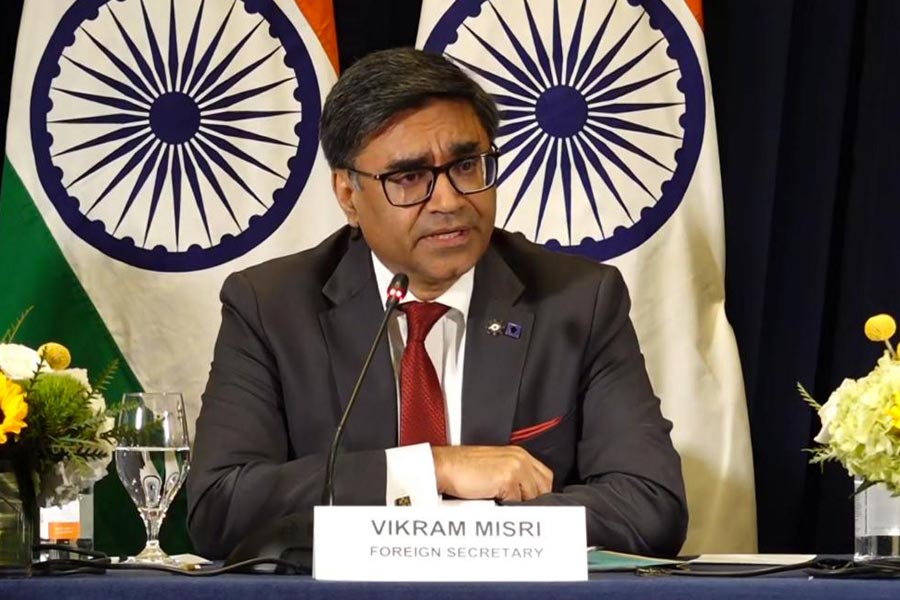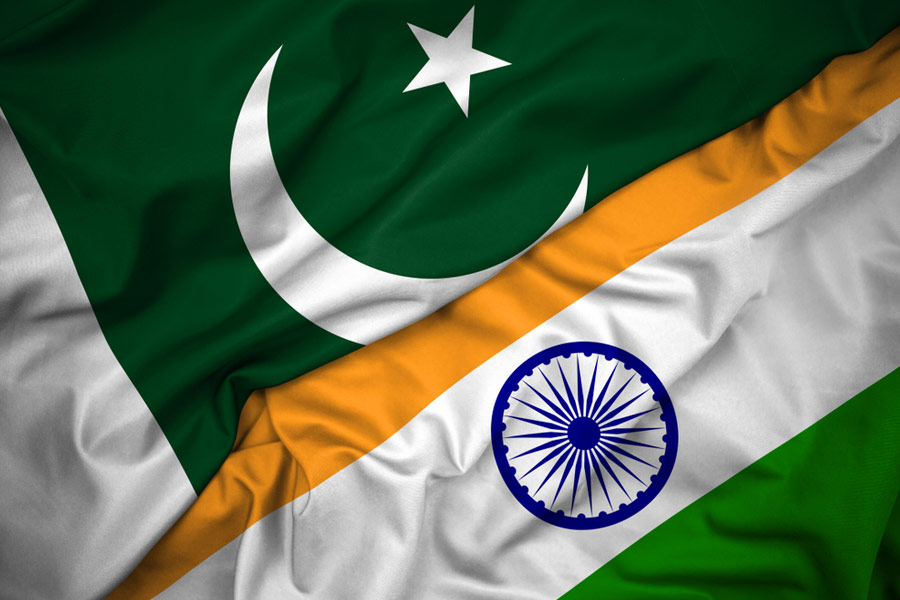 |
| Girls and boys use Gyantantra, the Hindi-based software, at Baba Ramdas Saraswati Shishu Mandir in Chandankyari, Bokaro, earlier this month. Picture by Pankaj Singh |
Around 225-odd tribal students of Baba Ramdas Saraswati Shishu Mandir, Bokaro, do their homework in the light of lanterns because there is no electricity in their homes. But, these children can challenge anyone their age and from any elite city school when it comes to studies.
They follow traditions with utmost dedication — they start their day by touching feet of elders at home and sing Saraswati Vandana before entering classrooms. At the same time, they know how to use computers, thanks to Saraswati Shishu Mandir at Jharna in Chandankyari block.
The school, which was established by social worker Baba Ramdas in 1999, is educating tribal children in both modern and traditional ways.
What has made its effort to spread the light of literacy among the downtrodden more effective is an interactive software, Gyantantra — Digital Dost Literacy India. This Hindi software was introduced around six months ago and the school authorities are happy with the results so far.
The school, which runs from a single-storey building with six rooms on a 64 decimal plot located near Itri river, imparts education to children from nursery to Class VIII.
Elaborating on their teaching method, Vikash Kumar, a science teacher at the school, said, “The project aims to transform the traditional way of teaching and stresses the need for more attention to each student. It ensures efficient use of time in school.”
According to Kumar, who is the co-ordinator of Gyantantra, the use of the interactive software not only speeds up the entire learning process, but also covers various important chapters of science, mathematics, environmental studies and English.
Not only traditional subjects, the school also imparts lessons on several important issues, such as HIV, sexual abuse, voting rights etc. Students are also taught how to open a bank account. Moreover, regular classes on moral values, yoga and meditation are held, too.
The project was launched around six months ago on the insistence of Literacy India, an NGO working in the field of education. The NGO provided six laptops, headphones and other necessary equipment to be used in each classroom. Moreover, all the teachers were given special training before launching the interactive software for proper implementation of the project.
Headmaster Vidhan Chatterji said there had been considerable improvement in the students’ learning abilities. “They can now learn things quickly and solve problems related to addition, subtraction, multiplication etc. with ease,” he said.
Chatterji had left a para-teacher’s job in a government school to join the Saraswati Shishu Mandir with the mission to educate children of the rural areas.
“I do not hesitate in taking bold decisions in the interest of the students. So when representatives of Literacy India approached us with the concept, we agreed. One can develop only by keeping pace with technology,” said Chatterji.
Rameshwar Tudu, the village headman of Puska panchayat under which the school falls, lauded the efforts of the school. “I am not very much aware about the interactive software. But I will extent all support for any such move that helps poor students,” Tudu said.
Banmali Gope, who works at a construction site as a labourer, sends his daughter Shital Kumari to this school. She is in Class II.
“We are poor, but we can’t compromise with the education of our children. When the school proposed to introduce the new teaching method, we readily agreed,” he added.





